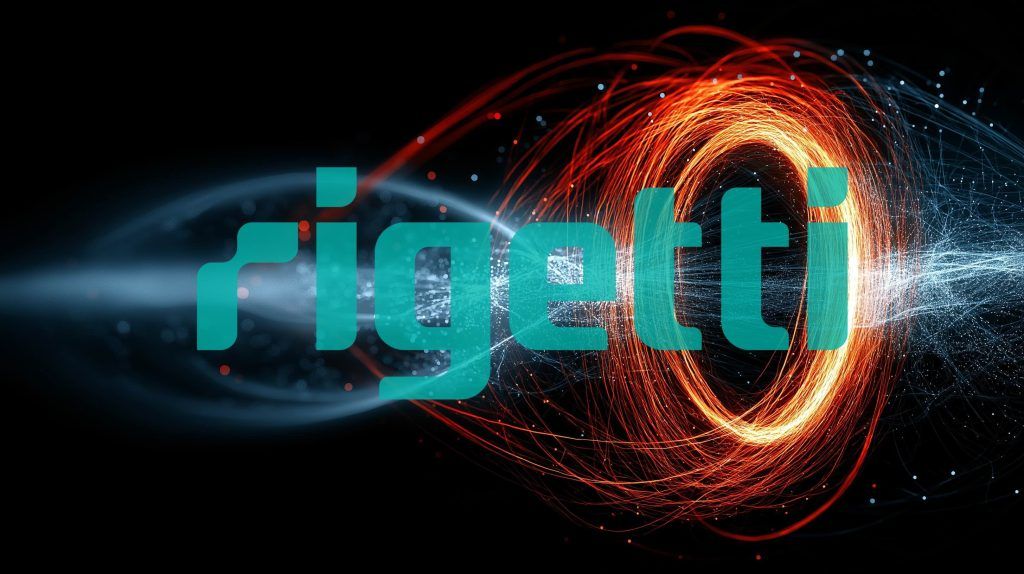- Stock Rally: FICO (NYSE: FICO) stock jumped ~18–23% in early Oct 2025 after unveiling a new licensing model [1], wiping out much of its YTD losses. The surge followed news lenders can now buy FICO® Scores directly, bypassing credit bureaus.
- Financial Strength: FICO’s Q3 FY2025 revenue grew ~20% year-over-year to $536.4M (up from $447.8M) [2], with GAAP net income of $181.8M ($7.40/share). Trailing twelve-month revenue approaches ~$1.8B, with profit margins ~33%. As of Oct 2, 2025, market cap was about $46B and trailing P/E roughly 69 (well above its 10-year average ~47) [3].
- New Business Model: In Oct 2025 FICO launched its “Mortgage Direct License Program,” letting mortgage resellers access FICO Scores at ~$4.95 per score (versus the prior $10 via bureaus) [4] [5]. CEO Will Lansing hailed this as a “turning point” that “eliminates unnecessary mark-ups” on scores [6] [7]. Analysts estimate the move cuts lenders’ costs by ~50% [8] [9].
- Industry Reaction: FICO’s plan sent shockwaves through credit bureaus. Equifax, Experian and TransUnion stocks tumbled 4–12% on Oct 2, 2025 [10] [11]. Citi and Jefferies analysts warned the new model could cut bureaus’ earnings by ~10–15% [12]. Regulators cheered: FHFA head Bill Pulte praised FICO’s “creative solutions” for consumers [13]. The Mortgage Bankers Assoc. called it a “step in the right direction,” though noted it remains to be seen if costs will truly fall [14].
- Analyst Sentiment: Wall Street is bullish. On Oct 1, 2025 Seaport Global initiated coverage with a Buy rating (1yr target $1,600) [15], and Barclays on Oct 2 boosted its 12-month target to $2,400 [16]. The consensus one-year price target (20 analysts) is ~$1,885 (implying ~26% upside) [17], with average recommendation “Outperform.” FICO’s valuation is now near historic norms, following strong earnings and this margin boost [18] [19].
- Growth Initiatives: Beyond credit scores, FICO is pushing into AI and global markets. In Sept 2025 it rolled out a domain-specific FICO Focused Foundation Model for financial services (narrow AI requiring far less compute) [20]. It also signed high-profile partnerships – for example, teaming with Chelsea FC on U.S. financial literacy and with India’s NMACC cultural center for a major NYC festival [21] [22] – highlighting its brand expansion.
- Peer Comparison: FICO’s business differs from Experian, Equifax and TransUnion (which are credit bureaus). FICO licenses its score and analytics software; bureaus aggregate consumer data. FICO’s direct-sale move threatens the bureaus’ markup on scores [23] [24]. In 2025, FICO’s stock has been outperforming the bureaus (which have lagged due to regulatory headwinds), as investors bet on FICO’s innovation.
Stock Performance & Financial Highlights
Fair Isaac (FICO) has been a strong performer in 2025. Its market capitalization is roughly $46 billion (Oct 2025), and its P/E ratio hovers near 69 [25] – well above both the tech sector average (~34) and FICO’s own long-term average (~47) [26] [27]. The premium valuation reflects FICO’s high margins and growth. Indeed, FICO’s recent earnings have been robust: Q2 2025 revenue was $499M (up 15% YoY) [28] and Q3 2025 revenue jumped 20% to $536.4M [29], while GAAP EPS rose to $7.40 from $5.05 a year prior [30]. Non-GAAP EPS were even higher ($8.57 vs $6.25) [31]. CEO Will Lansing noted “strong results with revenue growth of 20%” in Q3 [32] and raised full-year guidance.
Investors have rewarded this performance. FICO shares (around $1,800 on Oct 2 close) are near their mid-2025 highs [33]. The stock’s short-term breakout on Oct 2 was driven by the licensing announcement: shares spiked ~23% intraday [34] [35]. This jump erased most of FICO’s 2025 decline [36]. Year-to-date, FICO stock had lagged broader markets (partly due to earlier news like FHFA’s VantageScore decision), but the latest move has tilted sentiment positive.
Key Financial Metrics (2025): Trailing-12mo revenue ~$1.8B; net profit margin ~30–33%; cash flow strong ($286M operating cash in Q3 vs $213M prior year) [37]. FICO carries minimal debt and is known for cash generation. It pays no dividend, reinvesting in R&D and potentially M&A. (By comparison, Experian/Equifax/TransUnion have lower margins and more debt.) The FICO Score remains a cash cow: it’s used by ~90% of U.S. top lenders [38], providing a steady subscription-like revenue base.
New Licensing Model & Business Developments
Mortgage Direct License Program: The centerpiece development is FICO’s Oct 1, 2025 announcement of a direct-to-lenders licensing program for its credit scores [39] [40]. Under this model, mortgage resellers (tri-merge bureaus) can compute FICO® Scores themselves and sell them to lenders at a $4.95 fee per score (50% below the old $10 price) [41]. Lenders can also opt for a $33 “funded loan” fee paid once a loan closes [42]. CEO Will Lansing calls this a “turning point” in credit scoring – it “brings transparency, competition and cost-efficiency” by cutting out outdated markups [43]. As one analysis put it, the new model lets lenders “avoid paying the current about 100% markup the credit bureaus currently charge for the FICO scores” [44].
This shift is strategic. It responds to regulatory pressure (FHFA had criticized high pricing) and promises to deepen FICO’s direct ties to mortgage originators. FICO will still offer the same low prices to bureaus, but it can now reach customers directly [45]. This could boost FICO’s margins: analysts at Raymond James note it will “boost profitability potential,” and Seeking Alpha highlights that FICO’s margins should rise under the new plan [46]. The funded-loan fee also captures more value for FICO when loans close (e.g. for insurers, GSEs and investors who rely on FICO Scores).
AI and Analytics Products: Separately, FICO is expanding its analytics portfolio. In late Sept 2025 it launched the FICO Focused Foundation Model for Financial Services – a suite of narrow AI models (language and sequence models) trained on finance-specific data [47]. The company claims these require “1,000× less compute” than general models, offering accurate, auditable AI for banks and insurers [48]. This reflects FICO’s push into GenAI. It complements their existing software offerings like fraud detection and decision-management tools. FICO also announced its FY2025 results in July 2025 (after market), beating guidance and citing strong SaaS growth – news covered by analysts.
Partnerships & Marketing: FICO is broadening its brand footprint. In August 2025 it announced a multi-year partnership with Chelsea Football Club (UK soccer) as its U.S. partner to promote financial literacy [49]. Chelsea FC’s U.S. director said the deal will “inspire soccer fans to realize the importance of financial literacy” [50]. Also in Aug 2025, FICO teamed with India’s new Nita Mukesh Ambani Cultural Centre (NMACC) for an India-themed festival in NYC [51]. These tie-ins – a sporting event and a global arts celebration – reflect FICO’s strategy to raise its profile beyond finance. (FICO employs over 1,300 staff in Bangalore, making India its largest engineering center [52].) While not core to its products, these partnerships support brand and customer engagement.
Leadership Updates: No major changes at the top in 2025: Will (William) Lansing remains CEO. Notably, longtime Scores President James Wehmann retired in Sept 2025, with Lansing personally taking direct oversight of the credit scores division [53]. Wehmann’s departure is the only recent leadership change mentioned; the rest of FICO’s management team remained stable. (FICO also continues global hiring in AI/data fields.) The company has been carefully allocating capital to growth areas and share buybacks, rather than debt or dividends.
Analyst Commentary & Sentiment
Wall Street views FICO positively. The immediate catalyst – cutting out middlemen – earned praise and sparked a round of upgrades/targets. For example, Barclays raised its 12-month target to $2,400 on Oct 2 (implying +34% upside) [54], while Seaport Global on Oct 1 initiated coverage at “Buy” with a $1,600 target [55]. After Q3 results, UBS reiterated “Neutral” but lifted its target into the high $1600s [56], and BMO and Raymond James maintained “Outperform” with ~$1,800 targets in July [57].
According to GuruFocus, the consensus target (18 analysts) is about $1,885 [58]. This suggests roughly 25–30% potential upside from current levels. Analyst notes emphasize FICO’s improved earnings outlook: Seeking Alpha notes “20% revenue growth, expanding margins, and high profitability” underlie the bullish view [59]. The initiating Seaport report (Insider Monkey) cited FICO’s Q3 net income of $181.8M (vs $126M prior year) and $286M cash flow, flagging its strong fundamentals [60]. Zacks and other research outlets gave FICO an aggregate “Buy/Hold” stance after the announcement, with many suggesting the stock’s recent correction was a buying opportunity.
Investor sentiment is upbeat: institutional ownership is rising modestly and put/call ratios signal bullishness [61]. Fintel notes average one-year targets as of Sept 30, 2025 were ~$1,922 [62]. (For perspective, the stock trades mid-range of these forecasts; some hedge commentary even labels FICO as “oversold”). Overall, analysts believe the pricing model change is a structural positive that could entrench FICO’s position. TD Cowen called it “politically positive” (it addresses regulators’ concerns) [63], though UBS warned it introduces “substantial uncertainty” amid a volatile regulatory landscape [64].
Industry Context & Competitors
FICO operates in financial analytics, centered on its flagship FICO Score. Its competitors include the three major credit bureaus—Experian, Equifax and TransUnion—which historically have controlled distribution of credit scores and credit reports. FICO itself is independent (not owned by bureaus) and sells scoring models and decisioning software. In 2025, an important macro trend is tighter regulation and competition in credit scoring: the FHFA opened the door to VantageScore for mortgages, and there are calls to lower costs for consumers. FICO’s new model aligns with this, potentially dampening the threat from VantageScore by making FICO Scores cheaper to get.
Compared to bureaus, FICO’s business is more software/SaaS-like (its scores and platform have recurring licensing fees) and less dependent on lending volumes. Bureau stocks have traded defensively due to regulatory risks and slower consumer lending. For example, when FICO’s plan was announced Oct 1–2, credit bureau stocks fell sharply (Experian -4% in London, Equifax -8%, TransUnion -10% in the US) [65]. In contrast, FICO’s stock rose. Analysts note FICO’s move hits the bureaus’ business model: Citi said it “cuts out the margin” bureaus make on FICO Scores [66]; Jefferies warned bureau profits could fall ~10–15% [67].
FICO’s peers also include companies like VantageScore Solutions, Fair Isaac, debt collectors, and analytics firms (e.g. Verisk, ACI Worldwide). But none have the combination of scale and embedded usage that FICO Score has (used by 90% of U.S. lenders [68]). The mortgage market itself is under pressure from high interest rates in 2025, which could slow loan origination. However, by reducing cost and adding competition, FICO’s program may actually encourage more score pulling. In credit card and auto lending, FICO remains a strong brand.
Industry-wide, data analytics and AI in finance are growing. FICO benefits from this megatrend; its competitors in AI scoring include startups and big tech (like Google Cloud partnerships for scoring). But FICO’s deep domain expertise and regulatory compliance track record give it an edge. As Simply Wall St notes, continued investment in AI (“explainable AI”) and specialized models can support FICO’s premium products [69].
Recent News & Forecast
October 2025 Highlights: The big story of the moment is the direct licensing program launched Oct 1 (FYI: IPO after market). Reuters and major outlets covered FICO’s stock jump on Oct 2 [70]. On Oct 1-3, multiple analysts published buy ratings or upgrades (Seaport, Barclays, Benzinga’s summary). FICO’s IR filings and conference calls would be expected on Oct 29 (Q4) and Nov 5 (preliminary Q4 release). No other major news (like M&A) is reported yet in early Oct.
Medium/Long-Term Outlook: Analysts’ one-year forecasts imply strong growth (some models predict continued double-digit revenue growth through 2026). For example, one projection has 2026 revenue ~$1.92B (flat from 2025 due to conservatism) [71], but higher profit margins. Most analysts assume FICO’s core scores business will sustain mid-teens growth, aided by cloud software sales. The new licensing program could lift long-term margins significantly.
Beyond 2026, FICO’s prospects hinge on several factors: mortgage market health (more loans = more scores), adoption of its AI products in banking/insurance, and continued pricing power. The current consensus is moderately bullish: Average price targets suggest ~25% upside in 12 months [72]. Some bull scenarios (e.g. Simply Wall Street) argue FICO is under-valued given its innovation and international reach [73]. Bears might point to high valuation and execution risk of the new model (banks could resist change, or bureaus might retaliate).
As one expert put it, FICO’s move could be “one of the largest shake-ups in the credit-scoring system in decades” (Wall Street Journal via PYMNTS [74]). If executed well, it should boost revenue and profits over the medium term. Most analysts now expect FICO to resume beating estimates – they’ve historically been conservative on FICO due to past regulatory scares. The stock’s fundamentals (20%+ growth, 30%+ margin, strong cash flows) still underpin a positive outlook. In short, FICO’s strategic pivot has reset the narrative: experts say it deepens FICO’s moat and positions the company for continued high returns, even as it faces scrutiny to deliver on cost savings.
Sources: Company filings and press releases [75] [76] [77]; Financial news and analysis from Reuters [78] [79], Investopedia [80], PYMNTS [81] [82]; Analyst reports and media (Seeking Alpha [83], GuruFocus [84] [85], Benzinga [86], Insider Monkey [87]); and FICO press releases on partnerships [88] [89]. (All data current as of Oct. 3, 2025.)
References
1. www.reuters.com, 2. swingtradebot.com, 3. fullratio.com, 4. www.fico.com, 5. www.reuters.com, 6. www.fico.com, 7. www.reuters.com, 8. www.fico.com, 9. www.reuters.com, 10. www.reuters.com, 11. www.investopedia.com, 12. www.reuters.com, 13. www.reuters.com, 14. www.reuters.com, 15. www.gurufocus.com, 16. www.benzinga.com, 17. www.gurufocus.com, 18. seekingalpha.com, 19. www.gurufocus.com, 20. bankautomationnews.com, 21. www.fico.com, 22. www.fico.com, 23. www.reuters.com, 24. www.reuters.com, 25. fullratio.com, 26. fullratio.com, 27. fullratio.com, 28. www.fico.com, 29. swingtradebot.com, 30. swingtradebot.com, 31. swingtradebot.com, 32. swingtradebot.com, 33. www.reuters.com, 34. www.reuters.com, 35. www.reuters.com, 36. www.reuters.com, 37. www.insidermonkey.com, 38. www.reuters.com, 39. www.fico.com, 40. www.reuters.com, 41. www.fico.com, 42. www.fico.com, 43. www.fico.com, 44. www.reuters.com, 45. www.fico.com, 46. seekingalpha.com, 47. bankautomationnews.com, 48. bankautomationnews.com, 49. www.fico.com, 50. www.fico.com, 51. www.fico.com, 52. www.fico.com, 53. www.biia.com, 54. www.benzinga.com, 55. www.gurufocus.com, 56. www.gurufocus.com, 57. www.gurufocus.com, 58. www.gurufocus.com, 59. seekingalpha.com, 60. www.insidermonkey.com, 61. www.nasdaq.com, 62. www.nasdaq.com, 63. www.pymnts.com, 64. www.pymnts.com, 65. www.reuters.com, 66. www.reuters.com, 67. www.reuters.com, 68. www.reuters.com, 69. simplywall.st, 70. www.reuters.com, 71. www.nasdaq.com, 72. www.gurufocus.com, 73. simplywall.st, 74. www.pymnts.com, 75. www.fico.com, 76. www.fico.com, 77. swingtradebot.com, 78. www.reuters.com, 79. www.reuters.com, 80. www.investopedia.com, 81. www.pymnts.com, 82. www.pymnts.com, 83. seekingalpha.com, 84. www.gurufocus.com, 85. www.gurufocus.com, 86. www.benzinga.com, 87. www.insidermonkey.com, 88. www.fico.com, 89. www.fico.com







